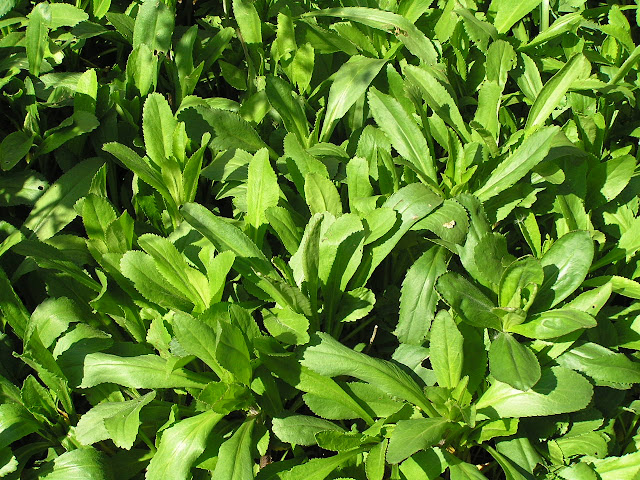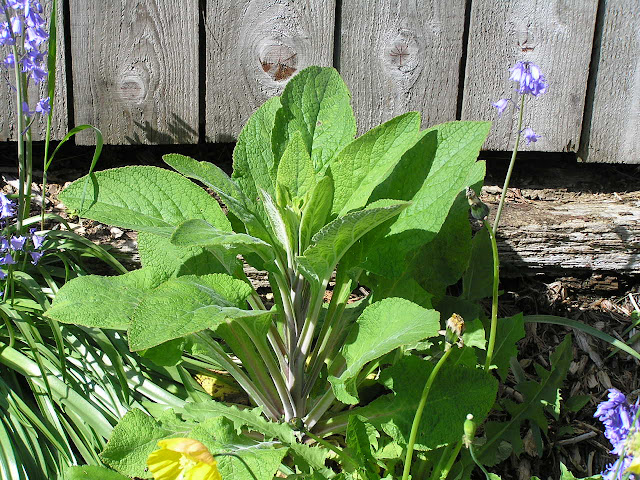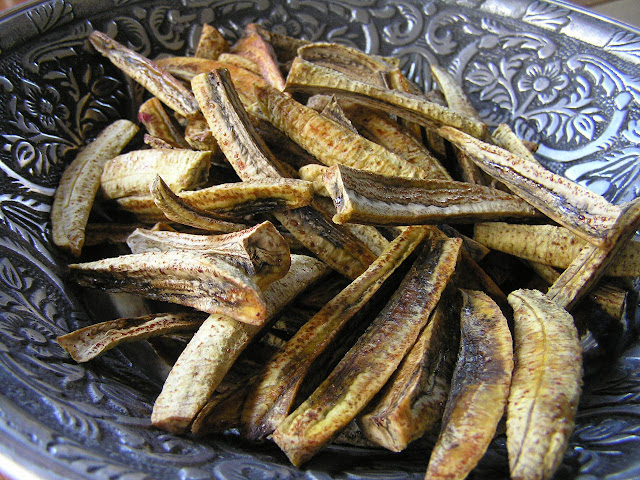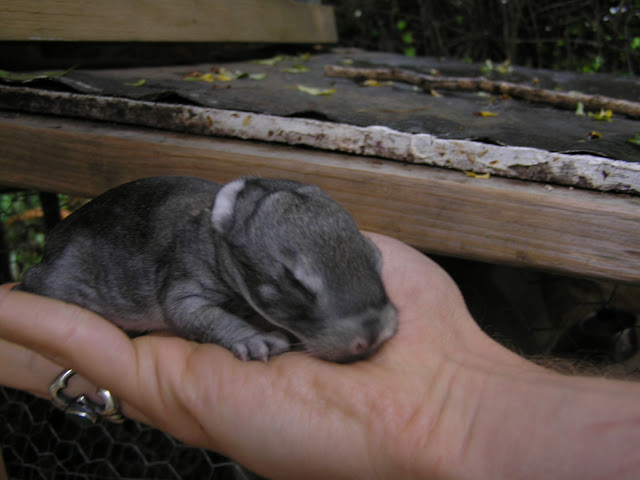Identifying And Harvesting Edible Weeds In The Garden
Lately, whenever we want some greens-- at least once every day-- I take a big bowl out to the garden and snip leaves off any weeds that look tasty. The best ones come right out of my raised beds: they grow in great soil, they're clean, and snipping them makes room for my more intentional and delicate plants. These same weeds go for a few dollars a bunch from my CSA. Be resourceful: harvest your own weeds!
Most of the time, I don't pull out the roots unless the weed is in a spot where it will disadvantage a more needy plant. Most weeds are so hearty that you can clip all or most of the leaves and they will come back nice & full in a few days. Why pull up the roots, when these weeds provide a great source of vitamins, minerals, and antioxidants? Weeds are free, abundant, and best of all, they want to grow everywhere!
In one sample harvest I gathered a large bowl of the following weeds, from a small section of a raised bed: Chickweed, borage, nipplewort, plantain, fireweed, dock, and dandelion. I deveined the dandelion and dock leaves and removed the larger stems from the fireweed. While the stem and midrib sections are edible, they're much pithier and sometimes more bitter than the tender leaves. I also made sure all the leaves were clean and free of slugs and grit (usually only a problem with leaves that were resting on the ground), and they're ready to use!
This combination would be great for a garden salad, but I generally prefer to toss everything in the blender, along with a couple of bananas, some chia or flax seeds, some kombucha and water for an easy, amazingly healthy and surprisingly delicious green smoothie. All of these weeds have a very mild flavor except the dandelion and fireweed. I made a smoothie once with a ton of dandelion greens and quickly learned it's better to mix them with other, milder, greens. For more smoothie ideas, check out my posts Wild Harvested Nettles Smoothie and Drink Your Veggies.
Other weedy greens I commonly use from my garden in smoothies include raspberry leaves, daisy leaves, and bedstraw. Bedstraw should only be used when young and tender, because older leaves produce high levels of silica.
I've been very happy to discover that, after getting a load of free compost from another local urban farmer, I have tons of nutritious lambsquarters growing. Would anyone else be so happy to receive a load of surprise weeds? Lambsquarters is supposed to be one of the most nutrient dense greens you can eat, and I'd been eagerly awaiting the day when I had a free and abundant source of them. I haven't got a picture of it yet, but they're widely available online if you want to know what it looks like.
Before I knew anything about edible weeds I eradicated all my purslane. It turns out purslane is an absolute delicacy, and all too easy to eradicate. Someday I hope to see some of this succulent green spreading over my garden beds again. Again, I don't have a photo of purslane, unfortunately. It's beautiful too! It really grows in a neat pattern.
Weeds I would never consume, or give to my livestock, include foxglove, nightshade, buttercup, laurel, Spanish bluebells, and columbine. This, obviously, is not an extensive list; these are simply the most common poisonous plants in my Pacific Northwest yard. While I am working to eradicate the deadly nightshade, bluebells, and buttercups, I do allow the foxglove & columbine to thrive because the hummingbirds adore these flowers. We try to remember what other creatures besides ourselves need in a garden.
Then there are the plants I won't feed our family but that the rabbits & chickens can eat, including morning glory (or, more aptly, bindweed) most grasses, rose, and blackberry. We also get a lot of random mustard-family weeds, which I'm sure would be safe for our family to eat but I generally, not knowing exactly what they are, toss them to the bunnies. The rabbits also get any mint that I find growing in random places, although if it's clean I'll harvest it for tea. I also give the rabbits many chive blossoms, on their long tough stems. We occasionally eat them in salads, but, like weeds, we get so many more than we can use.
It's worth learning about the volunteers & weeds in your garden. We've gone from spending about $15/week on greens to freely harvesting all we need right outside, absolutely fresh and organic, and often so much more nutritious than anything you can buy. Plus, they don't take up any valuable fridge space! Here's one more way you can use weeds: Lacto-Fermented Dandelion Soda, this time using the flowers.
For more info on identifying and harvesting edible plants, check out my earlier posts Wild Foraging In April and Edible Weeds.
 |
| Dead nettle: The name, while ominous sounding, is meant to be reassuring. The leaves are nettle-shaped but don't have a sting. Edible leaves & flowers. |
Most of the time, I don't pull out the roots unless the weed is in a spot where it will disadvantage a more needy plant. Most weeds are so hearty that you can clip all or most of the leaves and they will come back nice & full in a few days. Why pull up the roots, when these weeds provide a great source of vitamins, minerals, and antioxidants? Weeds are free, abundant, and best of all, they want to grow everywhere!
 |
| A poultice of plantain will help draw out infection from a wound, and it also makes a great green vegetable! Its tough leaves can be cooked or blended raw in a smoothie. |
In one sample harvest I gathered a large bowl of the following weeds, from a small section of a raised bed: Chickweed, borage, nipplewort, plantain, fireweed, dock, and dandelion. I deveined the dandelion and dock leaves and removed the larger stems from the fireweed. While the stem and midrib sections are edible, they're much pithier and sometimes more bitter than the tender leaves. I also made sure all the leaves were clean and free of slugs and grit (usually only a problem with leaves that were resting on the ground), and they're ready to use!
 |
| Fireweed has a sharper taste than most of my garden weeds, so I use it in smaller quantities. |
This combination would be great for a garden salad, but I generally prefer to toss everything in the blender, along with a couple of bananas, some chia or flax seeds, some kombucha and water for an easy, amazingly healthy and surprisingly delicious green smoothie. All of these weeds have a very mild flavor except the dandelion and fireweed. I made a smoothie once with a ton of dandelion greens and quickly learned it's better to mix them with other, milder, greens. For more smoothie ideas, check out my posts Wild Harvested Nettles Smoothie and Drink Your Veggies.
 |
| Ox Eye Daisies: The leaves & flowers are edible. I personally think the flowers reek, but the petals are alright, and the leaves are tender and taste very interesting- my kids love them! |
Other weedy greens I commonly use from my garden in smoothies include raspberry leaves, daisy leaves, and bedstraw. Bedstraw should only be used when young and tender, because older leaves produce high levels of silica.
 |
| Bedstraw: the mature plant contains too much silica to be palatable, but young plants and leaves are tender and mild. We call it "cat tongue" because of its raspy texture. |
I've been very happy to discover that, after getting a load of free compost from another local urban farmer, I have tons of nutritious lambsquarters growing. Would anyone else be so happy to receive a load of surprise weeds? Lambsquarters is supposed to be one of the most nutrient dense greens you can eat, and I'd been eagerly awaiting the day when I had a free and abundant source of them. I haven't got a picture of it yet, but they're widely available online if you want to know what it looks like.
 |
| Anyone else have a raspberry jungle in their garden? Thin out the volunteers occasionally, and use them in smoothies or cook them up like spinach. |
Before I knew anything about edible weeds I eradicated all my purslane. It turns out purslane is an absolute delicacy, and all too easy to eradicate. Someday I hope to see some of this succulent green spreading over my garden beds again. Again, I don't have a photo of purslane, unfortunately. It's beautiful too! It really grows in a neat pattern.
 |
| Nightshade: not for human or animal. I try to pull it when I see it, but maybe some birds eat it and spread the seeds... more are always popping up here and there. |
Weeds I would never consume, or give to my livestock, include foxglove, nightshade, buttercup, laurel, Spanish bluebells, and columbine. This, obviously, is not an extensive list; these are simply the most common poisonous plants in my Pacific Northwest yard. While I am working to eradicate the deadly nightshade, bluebells, and buttercups, I do allow the foxglove & columbine to thrive because the hummingbirds adore these flowers. We try to remember what other creatures besides ourselves need in a garden.
Then there are the plants I won't feed our family but that the rabbits & chickens can eat, including morning glory (or, more aptly, bindweed) most grasses, rose, and blackberry. We also get a lot of random mustard-family weeds, which I'm sure would be safe for our family to eat but I generally, not knowing exactly what they are, toss them to the bunnies. The rabbits also get any mint that I find growing in random places, although if it's clean I'll harvest it for tea. I also give the rabbits many chive blossoms, on their long tough stems. We occasionally eat them in salads, but, like weeds, we get so many more than we can use.
 |
| Geums, supposedly edible... if you like eating paper. Perfect for the rabbits & chickens ;) |
It's worth learning about the volunteers & weeds in your garden. We've gone from spending about $15/week on greens to freely harvesting all we need right outside, absolutely fresh and organic, and often so much more nutritious than anything you can buy. Plus, they don't take up any valuable fridge space! Here's one more way you can use weeds: Lacto-Fermented Dandelion Soda, this time using the flowers.
 |
| These fish shaped leaves belong to Sorrel. The leaves are absolutely tender and easy to nibble. Add to salads, soups, sandwiches, or smoothies. |
For more info on identifying and harvesting edible plants, check out my earlier posts Wild Foraging In April and Edible Weeds.




























